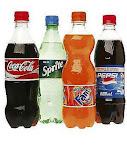A fermented alcoholic beverage brewed from malt and flavored with hops.
A fermented beverage brewed by traditional methods that is then dealcoholized so that the finished product contains no more than 0.5 percent alcohol.
percent alcohol.
A carbonated beverage produced by a method in which the fermentation process is either circumvented or altered, resulting in a finished product having an alcohol content of no more than 0.01 percent.
A fermented beverage brewed by traditional methods that is then dealcoholized so that the finished product contains no more than 0.5
 percent alcohol.
percent alcohol.A carbonated beverage produced by a method in which the fermentation process is either circumvented or altered, resulting in a finished product having an alcohol content of no more than 0.01 percent.



